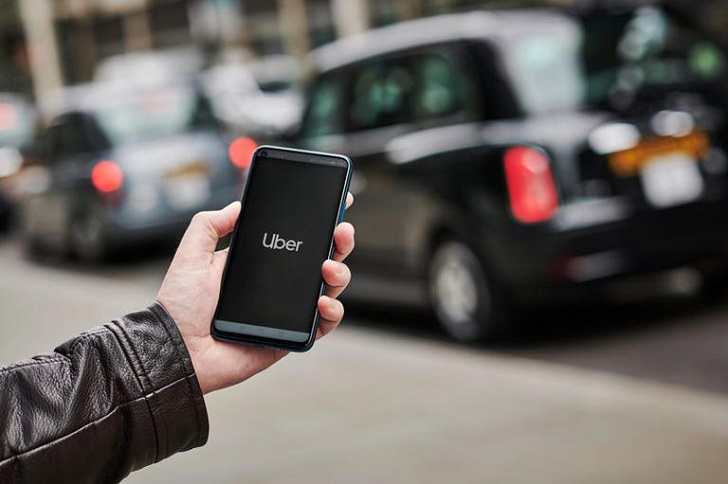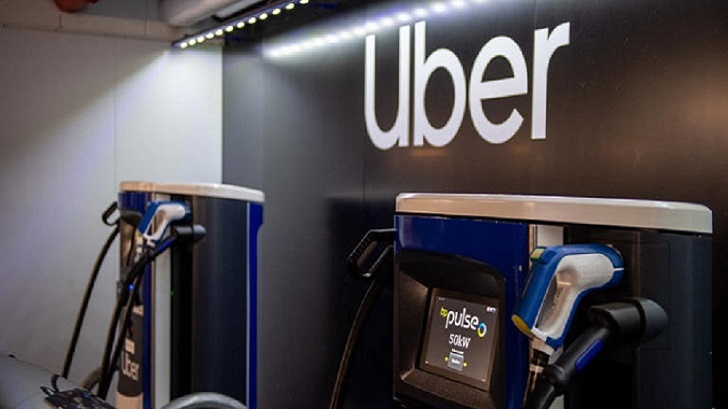As the world adopts sustainable alternatives, Uber encourages riders to consider an electric Uber for their trips. In a recent interview, CEO Dara Khosrowshahi stressed that waiting a few extra minutes for an electric vehicle (EV) can significantly benefit the environment. Choosing an electric Uber aligns with Uber’s sustainability goals and represents a meaningful step toward reducing global emissions.
Electric Uber Options: A Sustainable Choice
Uber remains committed to reaching zero-emission rides by 2040 and is introducing options for customers to select electric vehicles as their primary choice. Although EVs may take slightly longer to arrive, their environmental benefits make them a valuable choice. Most Uber cars still run on petrol, diesel, or hybrid engines, but the company believes electric rides offer a greener alternative for sustainability-conscious users.

benefit the environment.
Beyond the simple addition of an EV option, Uber is making strides to achieve its sustainability goals. Electric Ubers symbolize the company’s drive to lead the zero-emission transportation movement. Khosrowshahi believes customers who choose EV rides are taking a step toward a cleaner future. This choice not only supports the environment but also encourages others to consider electric options as well.
The Role of Governments and Chinese-Made EVs
While Uber promotes electric rides, Khosrowshahi says governments need to support EV adoption more actively. He believes that affordable EV ownership is crucial for high-mileage drivers like Uber drivers. Additionally, he highlighted the benefits of affordable Chinese-made EVs to meet the growing demand for electric vehicles. However, many countries view these vehicles as a competitive threat to their domestic carmakers.
Khosrowshahi sees affordable, high-quality Chinese EVs as essential to combat climate change. Despite geopolitical tensions, he argues that promoting these vehicles can lower EV costs and speed up clean technology adoption. As Uber strives to electrify its fleet, affordable options become vital to helping drivers make this transition and ensuring the shift remains sustainable.
Tackling Infrastructure and Cost Challenges
Despite Uber’s electric ambitions, several challenges remain. Khosrowshahi acknowledges that the higher cost of EVs is a significant obstacle, especially for extensive drivers. Additionally, many regions still lack adequate charging infrastructure, which poses another barrier to widespread EV adoption. While large cities like London have high EV adoption among Uber drivers, other areas struggle due to limited charging station access.
Khosrowshahi emphasizes the need for governments to invest in charging infrastructure, such as fast-charging stations, to support the EV transition. This support should prioritize high-mileage drivers, who travel more miles than average drivers. These drivers substantially impact emissions, so prioritizing them in the switch to electric vehicles can maximize environmental benefits.
Tariffs and Their Effect on EV Pricing
Another significant challenge is tariffs on Chinese-made electric vehicles, particularly in the United States and the European Union. These tariffs make imported EVs more expensive, reducing their competitive edge against local options. Khosrowshahi believes these tariffs may be politically motivated but ultimately hinder environmental progress by restricting affordable EV access.
For example, the European Union has imposed tariffs on Chinese EVs, which it claims are unfairly subsidized. This move protects local industries but potentially slows EV adoption. Khosrowshahi considers these tariffs counterproductive, as Chinese-made EVs could help expand Uber’s electric fleet at a lower cost. By removing these barriers, Uber and similar companies could scale up EV initiatives faster and more affordably.
Uber’s Service Expansion and EV Adoption
Uber’s commitment to sustainability extends beyond passenger rides. The company is also expanding its delivery services to include groceries, pet food, and household products—all potentially delivered by electric vehicles. Khosrowshahi envisions a future where Uber leverages its EV fleet for fast, eco-friendly delivery, which meets consumer demands for convenience without compromising sustainability.
This expansion aligns with Uber’s long-term goals of reducing emissions across all services. By incorporating electric vehicles into its delivery operations, Uber hopes to differentiate itself from competitors and appeal to environmentally conscious customers. This shift reflects Uber’s strategy to integrate sustainability into its growth, meeting consumer demands while reducing its carbon footprint.
The Future of Electric Uber Rides
As Uber continues its push to electrify its fleet, the company remains focused on overcoming challenges associated with sustainable transportation. By promoting affordable electric vehicles, advocating for government support, and expanding EV use to include deliveries, Uber is positioning itself as a key player in the green transportation revolution. Though obstacles remain, Uber’s commitment to sustainability demonstrates its vision for a cleaner, greener future.
Beyond the simple addition of an EV option, Uber is making strides to achieve its sustainability goals. Electric Ubers symbolize the company’s drive to lead the zero-emission transportation movement. Khosrowshahi believes customers who choose EV rides are taking a step toward a cleaner future. This choice not only supports the environment but also encourages others to consider electric options as well.


